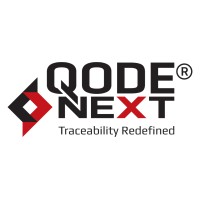Inventory management helps you identify stocks with low-profit margins. Analysing stock data based on sales volume and demand is key to eliminating low-demand SKUs. Pareto analysis in inventory management enables you to increase revenue and cash flow.
Let’s explore the Pareto inventory analysis technique, including its key features and benefits.
What is Pareto Analysis?
Pareto analysis is derived from the 80/20 inventory rule, introduced by Italian economist Vilfredo Pareto. He observed that roughly 80% of effects come from 20% of causes. In inventory management, this principle translates to identifying and prioritizing the small percentage of items that significantly impact overall value or performance.

The Importance of Pareto Analysis in Inventory Management
Pareto analysis in inventory management is crucial because it allows organizations to:
- Optimise Resources: By focusing on the most critical items, businesses can allocate resources like storage, finances, and personnel more effectively.
- Improve Decision-Making: It simplifies complex inventory data, enabling informed and strategic decisions.
- Enhance Customer Satisfaction: Prioritizing high-demand items ensures their availability, reducing the risk of stockouts.
- Reduce Costs: Effective categorisation helps in minimising carrying costs and avoiding overstocking.
How to Perform Pareto Analysis in Inventory Management
Here’s a step-by-step guide to implementing the 80/20 inventory rule in management:
1. Gather Inventory Data
Collect detailed data on your inventory, including:
- SKU numbers
- Unit prices
- Annual consumption values
- Total revenue contribution per item
2. Calculate the Annual Usage Value
For each item, multiply the annual consumption by its unit price to determine its contribution to the overall inventory value.
3. Rank Items by Contribution
Sort inventory items in descending order based on their annual usage value.
4. Calculate the Cumulative Percentage
Compute the cumulative percentage of total inventory value contributed by each item.
5. Classify Items into Categories
Group items into three categories:
- Category A: Top 20% of items contributing to 80% of the value.
- Category B: The next 30% of items contribute to 15% of the value.
- Category C: Remaining 50% of items contributing to 5% of the value.
6. Implement and Monitor
Category A: High-priority items. Focus on accurate demand forecasting, regular stock checks, and robust supplier relationships.
Category B: Moderate-priority items. Maintain adequate stock levels and monitor performance periodically.
Category C: Low-priority items. Optimise stock levels and minimise storage costs.
7. Review Regularly
Inventory priorities can change over time. Conduct periodic reviews to adjust categorisation and ensure alignment with business objectives.
Benefits of Pareto Analysis in Inventory Management
Pareto analysis in inventory management offers several significant advantages that can transform how businesses manage their inventory:
1. Increased Efficiency
By identifying high-priority items, businesses can focus their efforts where they matter most. This targeted approach minimises time spent on low-value items, improving inventory placement optimisation, and allowing companies to meet demand more effectively.
2. Better Cost Management
One of the primary benefits of Pareto analysis is its ability to reduce overall costs. Businesses can avoid overstocking by prioritising essential items, reducing carrying costs, and preventing losses from obsolete or slow-moving inventory.
3. Improved Inventory Turnover
With a focus on high-value items, businesses can increase the frequency of stock rotation for these products, leading to higher inventory turnover rates. This not only optimises cash flow but also ensures that products remain fresh and relevant to market needs.
4. Enhanced Supply Chain Resilience
Companies can strengthen their supply chains by prioritising critical inventory items. Keeping Category A items always in stock reduces the risk of production halts, customer dissatisfaction, and missed sales opportunities.
5. Simplified Stock Control
Segmenting inventory into A, B, and C categories simplifies stock control processes. Businesses can allocate different levels of attention, storage, and monitoring to each category, streamlining operations and reducing complexity.
6. Strategic Resource Allocation
Pareto analysis ensures that resources—such as labour, warehouse space, and finances—are allocated to the items that generate the most value. This strategic focus increases return on investment (ROI) and enhances overall productivity.
7. Improved Forecasting Accuracy
Focusing on high-priority items enables better demand forecasting. Businesses can analyse trends and patterns for these critical items, leading to more accurate predictions and reducing the likelihood of stockouts or excess inventory.
8. Higher Customer Satisfaction
Ensuring the availability of top-priority products means customers are less likely to experience stockouts. This reliability fosters trust and loyalty, contributing to long-term business success.
9. Supports Scalability
For growing businesses, Pareto analysis provides a scalable approach to inventory management. As the product range expands, the method remains effective in identifying and managing high-value items, ensuring sustainable growth.
10. Encourages Data-Driven Decisions
Pareto analysis provides actionable insights based on hard data. This empowers businesses to make informed decisions, minimising guesswork and improving strategic planning.
Limitations of Pareto Analysis in Inventory Management
While Pareto analysis in inventory management offers significant benefits, it also has some limitations:
- Oversimplification – Categorizing items into A, B, and C groups may affect optimization and inventory management.
- Data Dependency – The accuracy of Pareto analysis depends on the quality and completeness of inventory data.
- Neglecting External Factors – It doesn’t account for sudden market shifts, seasonal variations, or changes in customer preferences.
- Lack of Items – There are no Actionable Insights for Category C. Items in Category C may still play a critical role in specific scenarios but receive minimal attention.
Practical Applications of Pareto Analysis in Inventory Management
- Retail Industry– Retailers can identify high-value products and ensure they are always in stock, enhancing customer satisfaction and revenue.
- Manufacturing – Manufacturers can focus on essential raw materials and components, minimising production delays.
- E-commerce – Online businesses can prioritise fast-moving products, improving delivery speed and inventory turnover.
- Healthcare – Hospitals and clinics can manage critical medical supplies efficiently, ensuring uninterrupted patient care.
FAQs – Pareto Analysis in Inventory Management
What is the main purpose of Pareto analysis in inventory management?
The main purpose is to identify and prioritise the most valuable inventory items, enabling businesses to optimise resources, reduce costs, and improve efficiency.
How often should Pareto analysis be conducted?
Conducting Pareto analysis quarterly or semi-annually is recommended to account for changes in demand, costs, and market trends.
Can Pareto analysis be applied to small businesses?
Yes, small businesses can use Pareto analysis to make data-driven decisions and improve inventory management efficiency, even with limited resources.
What tools are useful for performing Pareto analysis?
Tools like Excel, Google Sheets, and specialised inventory management software can help automate calculations and visualisations.
Is Pareto analysis applicable to service-based industries?
While primarily used for inventory, the principles of Pareto analysis can be applied to prioritise services, customers, or tasks in service-based industries.
What is the optimal level of inventory?
It depends on Economic Order Quantity(EOQ) which is specific to a company’s demand and ordering cost structure. The ideal quantity should be cost-efficient to meet customer demand.
Conclusion
Pareto analysis in inventory management allows companies to anticipate demand fluctuations in advance. You identify top-performing stocks and priorities them over low-selling items. Knowing this will help you enhance your business operations. Are you looking for a trusted supply chain expert? Qodenext is just one click away. Let’s connect to build your logistics success story today.







